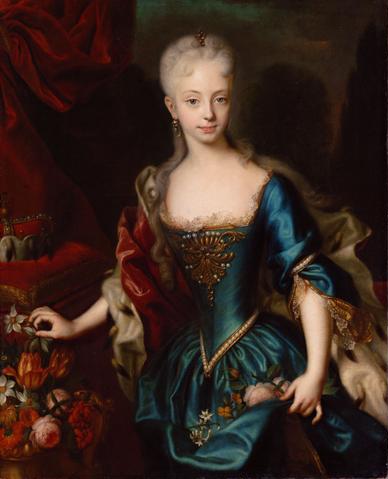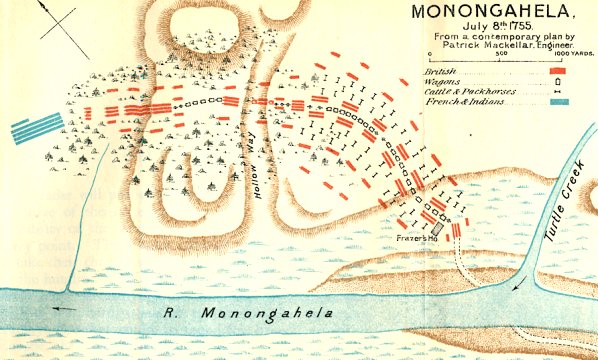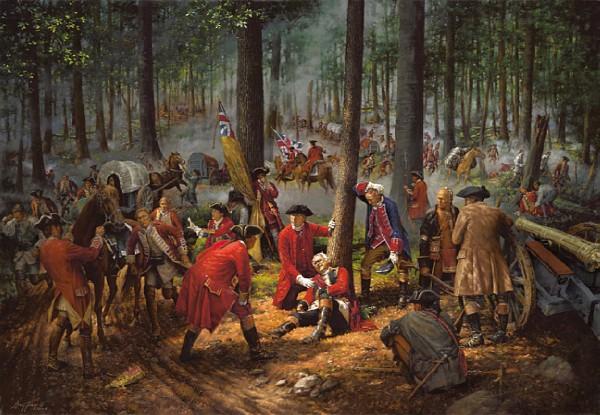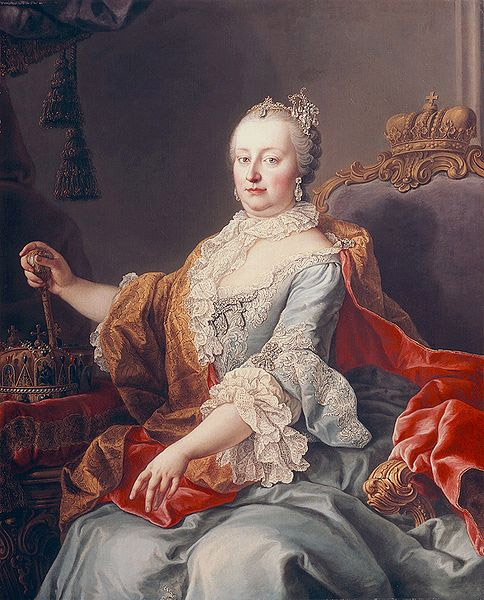In previous articles we have learned how 13 different colonies were established. Now we can discuss the Seven Years’ War, which is one of the direct causes of the Revolutionary War. Thank you for reading up to this point!
The United States: A Road to Independence (4)
The Seven Years’ War is often referred to as the Original World War, as the war was fought in vast areas because the European powers of the time fought not only in the Continent but also in their colonial areas. To talk of the Seven Years’ War, we should move the theater of this story from the Americas to Central Europe and see what happened.
Germany in 18th century was divided in to 300 small states under the loose leadership of the Holy Roman Empire. The entities influential to the European politics were Austria, Prussia, and Saxony. Austria had long been a power leader of the region and Prussia was a newly rising power of Northern Germany. Peace was ended as the monarchs of Austria and Prussia changed.
(This map makes me puke. Austrian territories are Orange, while Prussian are lemon-yellow. This map is just prior to the War of Austrian Succession, which we will discuss right now.)
Prussian king of the time was Friedrich Wilhelm I. This aggressive king had no interests in extravagance or arts, which enabled him to change Prussia into a garrison state. The uniform of government officials became military uniforms and he, himself, wore them everyday. Friedrich II the Great succeeded the throne after him. Friedrich was known as a loser who got beat up by his father for loving poetry and flowers, although all these incidents turned out to be just the tip of an iceberg of his capabilities.
 (This weak-looking prince gives the entire Europe a huge sucker-punch.)
(This weak-looking prince gives the entire Europe a huge sucker-punch.)
The great monarch, as soon as he assumed the throne, more than doubled his army from 80,000 to 190,000, thanks to the rich treasury he inherited from his frugal father. Prussia became the most militaristic nation of all time; almost 40% of male population were enlisted in the army.
 (One of the most unique geniuses in history. Personally, this is the guy I respect the most next to my father. I could actually right an article with just personal praises.)
(One of the most unique geniuses in history. Personally, this is the guy I respect the most next to my father. I could actually right an article with just personal praises.)
A huge change was about to occur in Austria as well. The Austrian emperor of the time was Charles VII, who only had female heirs. The most talented of his daughters was Maria Theresa. However, there was a slight problem, and it was the fact that the throne of the Holy Roman Empire, which was traditionally occupied by the Austrian emperors, could not be succeeded by women, and if Austria was to give up the imperial throne, 40% of Austrian territory would be gone with it.
 (Maria Theresa in her good-old-days. Thanks to her beauty and background she attracted many admirers and, ironically enough, one of them was Friedrich the Great, who later becomes her arch-nemesis. Of course, his attempt was solely political. Maria Theresa ends up marrying Franz, Duke of Lorraine, whom she actually loved.)
(Maria Theresa in her good-old-days. Thanks to her beauty and background she attracted many admirers and, ironically enough, one of them was Friedrich the Great, who later becomes her arch-nemesis. Of course, his attempt was solely political. Maria Theresa ends up marrying Franz, Duke of Lorraine, whom she actually loved.)
Worried about her daughter’s right to the throne, Charles VII hastily married his daughter to the Duke of Lorraine François Etienne(Franz Stephen in German), and, at the same time, tried to persuade other European nations to approve the Pragmatic Sanction, which asked them to recognize his daughter’s right to rule. Almost begging and even giving out fiefs to others, Charles VII was able to get the Sanction signed.
(Maria Theresa in her throne. It is more than evident that she was a highly gifted leader, considering the disadvantages of a woman she had to go through. Of course, she virtually lost the War of Austrian Succession and the Seven Years’ War.)
When Charles VII died and his daughter assumed the throne, other European powers feigned ignorance and denied Theresa’s succession. They were attempting to destroy Austria and the Holy Roman Empire during this chaotic time. In the fall of 1740, Friedrich II became the first to defy the young empress’s authority and invaded Silesia without declaring war. Another state of Bavaria(Bayern) also invaded Austria trying to usurp the position of Austrian emperor; France aided the invasion force as well.
Who, then, was on Austria’s side? Britain and Russia were supposed to help Austria but Sweden, who aligned with Prussia, invaded the Russians and held them back. Britain could barely help the Austrians, because its archenemy France joined the war.
 (The yellow-colored territory is Hanover. The British crown also ruled Hanover, and French threat on the state was the apparent reason why Britain joined in.)
(The yellow-colored territory is Hanover. The British crown also ruled Hanover, and French threat on the state was the apparent reason why Britain joined in.)
After 8 years of bloodshed, European powers decided to recognize Theresa’s right in the Treaty of Aix-la-Chapelle, although the war did not end in Austrian victory. Silesia was ceded to Prussia and Holy Roman Emperor’s throne went to her husband. The war ended imperfectly.
Now, why am I talking about the War of Austrian Succession? It’s because this war’s Season 2 was the Seven Years’ War.
After the war, Maria Theresa of Austria was still pissed because of the cession of Silesia. Count Kaunitz, Austrian Secretary of State, came up with a plan, in which Austria would make alliance with France over historical grievances in order to surround Prussia in three directions with Russia in the east, Austria of the south, and France in the west, to defeat Friedrich II. Surprisingly enough, Louis XV of agreed to this plan and, with a series of marriages, in which Marie Antoinette married Louis August(who later becomes Louis XVI), Austria and France became families. This alliance would later be called the Alliances of Three Ladies.
Already disappointed at Austrian incapability during the War, Britain, hearing this news, immediately made treaties with Prussia. Thus, an alliance of Britain, Hannover, and Prussia was established. This incident is called the Reversal of Alliances, or the Diplomatic Revolution. This shifted the balance of worldwide powers.
 (Spain was thought to be on France’s side because of the Bourbon line of monarchs and Portugal right next to it was close friends with Great Britain.)
(Spain was thought to be on France’s side because of the Bourbon line of monarchs and Portugal right next to it was close friends with Great Britain.)


(Why was this alliance called the Alliance of Three Ladies? It’s because of Madame de Pompadour, who was a mistress of Louis XV, Maria Theresa of Austria, and Empress Elizabeth of Russia.)
In response to this menace, our badass, Friedrich II, invaded Austria again in 1754, breaking the calm before a storm. His plan was to occupy Austrian capital of Vienna quickly in order to force Austria to surrender, and to invade Russia while the army of Great Britain-Hannover would hold the French(the official beginning of the war was the French invasion of British island of Minorca in the Mediterranean).
I think this is enough explanation of European stories, so let’s get back to North America. Unlike the War of Austrian Succession, the Seven Years’ War included many different colonial theaters all over the globe.
 (States, colonies, and theaters that were involved in the Seven Years’ War. Territory-wise, it was a larger war than WWI.)
(States, colonies, and theaters that were involved in the Seven Years’ War. Territory-wise, it was a larger war than WWI.)
At the time, there were three major forces occupying North America: New France of Canada and the Midwest, the Thirteen British Colonies in the Easter Seaboard, which we have discussed so far, and New Spain of Florida and New Mexico. We will be focusing on the war between the Thirteen colonies and New France. The Seven Years’ War in North America, or French-Indian War to be exact, occurred in the Ohio River Valley.
 (The Ohio River Valley in the middle of North America.)
(The Ohio River Valley in the middle of North America.)
(European colonies in North America. The Ohio River Valley was very significant to the blue, which is the French, because they were trying to connect their colonies that were located in the south and the north, and also because they wanted to suppress British expansion in the region.)
Great Britain founded Ohio Company to purchase lands in Ohio region. In response to this measure, French colonial forces built a line of forts, which blocked the trade of between the Native American tribes in the West and British colonies. Threatened by the situation, Virginia, as a leader of the colonies, mustered volunteer militia. However, even at this point, Britain was unsure of how much the French influence was stretched.
On this page of history, we find a familiar name. The governor of Virginia, Robert Dinwiddie, gave 150 militiamen to 22-year-old Colonel George Washington and said “We heard the French were making a move in the west. Go find out what’s happening and build a fort if you feel like it?” or something like that.
 (George Washington in his early year as Colonel in the Virginian militia. The experiences in the French-Indian War would help him a lot in his career later on.)
(George Washington in his early year as Colonel in the Virginian militia. The experiences in the French-Indian War would help him a lot in his career later on.)
George Washington had previously attempted to stop the French movement. Before this expedition, he visited the French Fort le Beuf(which means Fort Beef) and demanded the withdrawal of the French. Politely enough, the French commander refused his request at the dinner table.
This time, with his militiamen, Washington decided to construct a fort in present-day Pittsburgh and headed west, only to find out that the French had already built Fort Duquesne there.
 (Fort Duquesne was built in the bank of three rivers. Some people pronounce it Dae-que-son, but according to Historian Jeff Carnazzo, it is pronounced Dew-cane. This is the correct way to say it.)
(Fort Duquesne was built in the bank of three rivers. Some people pronounce it Dae-que-son, but according to Historian Jeff Carnazzo, it is pronounced Dew-cane. This is the correct way to say it.)
He and his troops had to turn around, and inadvertently faced a small French detachment force and routed them with the help of the Iroquois. The militiamen built Fort Necessity in the south of Fort Duquesne. However, a fierce French attack ensued, as it turns out that a French diplomat, who was a brother to the French commander, was among the dead bodies of the defeated detachment.
11 hours of skirmish resulted in the death of one third of the militiamen, although Colonel George Washington still refused to surrender. Tired of this meaningless combat, French commander abandoned the siege so that the militiamen would return to Virginia. Now, we may ask, why he did not kill Washington. Well, considering the delicate and powder-keg diplomatic situation of the time, it would definitely result in a war if the French army executed a British officer. I know, I know. The war did happen nonetheless.
This defeat did not harm Washington’s reputation greatly, for everyone knew that it was not his fault. However, the colonists actually started to think, ‘We actually could die if this keeps happening.’ Worried about this matter, Benjamin Franklin convened a congress of delegates from 13 colonies in Albany in the May of 1754.
 (Benjamin Franklin was reportedly the most famous guy among the colonists, and with his fame he tried to save the colony. Although he was in his 70s, he plays a crucial in the Revolutionary War.)
(Benjamin Franklin was reportedly the most famous guy among the colonists, and with his fame he tried to save the colony. Although he was in his 70s, he plays a crucial in the Revolutionary War.)
This congress that met in Albany is referred to as Albany Congress, and it is notable that delegates from only 7 colonies, not all of them. The first agenda of the Congress was to keep the Iroquois Confederacy on Britain’s side, the second was to ask mainland Great Britain for help, and the last was to established a united government of the colonies. A union of Native American tribes, the Iroquois Confederacy initially fought alongside the British due to the grudges with the Hurons who sided with the French. At the congress, the alliance was re-recognized firmly.
(The Iroquois Confederacy even had its own flag. The Confederacy was constituted by the tribes of Mohawk, Seneca, Cayuga, Onondaga, and Oneida, and was so developed that they even had their own constitution. It was the most powerful entity in the continent before the European expedition began.)
The agenda of requesting reinforcements was completed easily. Great Britain accepted the request and sent 2 regular regiments under General Edmund Braddock. Although there is no opposition to the fact that Braddock was one of the most capable cavalry officers in the British imperial army, it became evident that his abilities were limited to the European theater. In other words, he was not to use conventional tactics, which were conducted in the plains of the Old World, in mountains and forests in North American theater; he did exactly the opposite.
 (The British line infantry was considered the best in the world along with Prussian regulars. They were often referred to as ‘Red Coats’ due to their unique uniform.)
(The British line infantry was considered the best in the world along with Prussian regulars. They were often referred to as ‘Red Coats’ due to their unique uniform.)
The third agenda, an attempt to found an united government of America, failed utterly. Individual colonies refused to give up their autonomy and sovereignty. Disappointed Franklin would have to wait 20 more years to achieve this goal.
Braddock headed to the Ohio River Valley right after his arrival. Among his aide-du-camp members was George Washington, not because he was particular familiar with the geography, but because he wrote a letter to the newly arrived general if he would be able to accompany the expedition. According to Historian Joseph Ellis, George Washington wrote his brother Lawrence that he is very glad to have connections to the regular army of Great Britain.
A battle broke out when the imperial army arrived at Monongahela River bank in July of 1755. 1,400 Red Coats and 500 militiamen were marching in a long line with women miscellaneous works just as they did back in Europe. Not even bothering to conduct pre-battle reconnaissance or intelligence collecting, Braddock was attacked by 100 French regulars, the same number of Canadian militia and 500 Huron tribesmen.
 (The map of the Monongahela just before the battle on July 9. The blue lines are the hidden French troops whereas the Red lines and dots are the British force. Evidently the marching line is stretched too far and thin.)
(The map of the Monongahela just before the battle on July 9. The blue lines are the hidden French troops whereas the Red lines and dots are the British force. Evidently the marching line is stretched too far and thin.)
As the British army approached within the firing range, the French fired in between dense woods, resulting in vast British casualties. Braddock lined up his troops, just as he did in Europe, and order them to counterattack with volley. However, the thin Red line of Coats in the middle of a forest could not be a better target for skirmishers.
 (The maelstrom of bullets in the Forest of Monongahela. Red Coats, who were used to the field battle of Europe, were no match for the forest indians of the Hurons.)
(The maelstrom of bullets in the Forest of Monongahela. Red Coats, who were used to the field battle of Europe, were no match for the forest indians of the Hurons.)
(The popular European formation of line infantry. There was a reason for this seemingly ridiculous tactics(I might be able to explain this in another post.), but even we, non-experts, know this would not work.)
To make the matter worse, while the Red Coats were falling like leaves, Edmund Braddock fell from his horse after getting shot in his shoulder. The French particularly sniped British officers; the Red crowd started to route.
One fun fact about this battle is that there is a slight discrepancy between the records of Great Britain and the United States. According to British records, the militiamen routed first and the regulars secured rear until they ‘withdrew.’ On the other hand, American historians argue that the Red Coats were distraught and ran first, while the brave soldiers of the colonies protected the tail. Regardless of who ran away first, one thing that both sides agree upon is that young colonel George Washington managed to rally the routing troops and took over the command to fall back orderly.
 (General Braddock was shot down. He would die after four days of excruciating pain.)
(General Braddock was shot down. He would die after four days of excruciating pain.)
 (George Washington sounding full retreat with heroic leadership.)
(George Washington sounding full retreat with heroic leadership.)
French commander General Langrade, who commanded the army of 700 men, thought he did not have sufficient amount of troops to pursue the routing enemy. British Colonel Thomas Dunbar took over the command and decided to abort the entire campaign; Fort Necessity was burned and the British withdrew from the Valley.
The Red Coats suffered the deathes of 456 troops along with 422 wounded soldiers, while the 26 officers died and 37 officers were wounded among 86 in total. Also, during the hasty retreat, wagons and women were left behind, and were captured by the French. On the other hand, the French force did not have to accept much consequence: 8 dead, 4 wounded. Hurons had 15 dead and 12 wounded. It was a decisive victory for France.
The Battle of Monongahela alarmed the States of the seriousness of the French-Indian War. Furthermore, the fleeing Red Coats were well remembered by the colonists. There were not considered invincible anymore.
Today’s article got carried away because I inserted many pictures for the description of events. In the next article, I will discuss how the Seven Years’ War progressed, its effects, and post-war world. I believe these articles can be more exciting with war stories.




